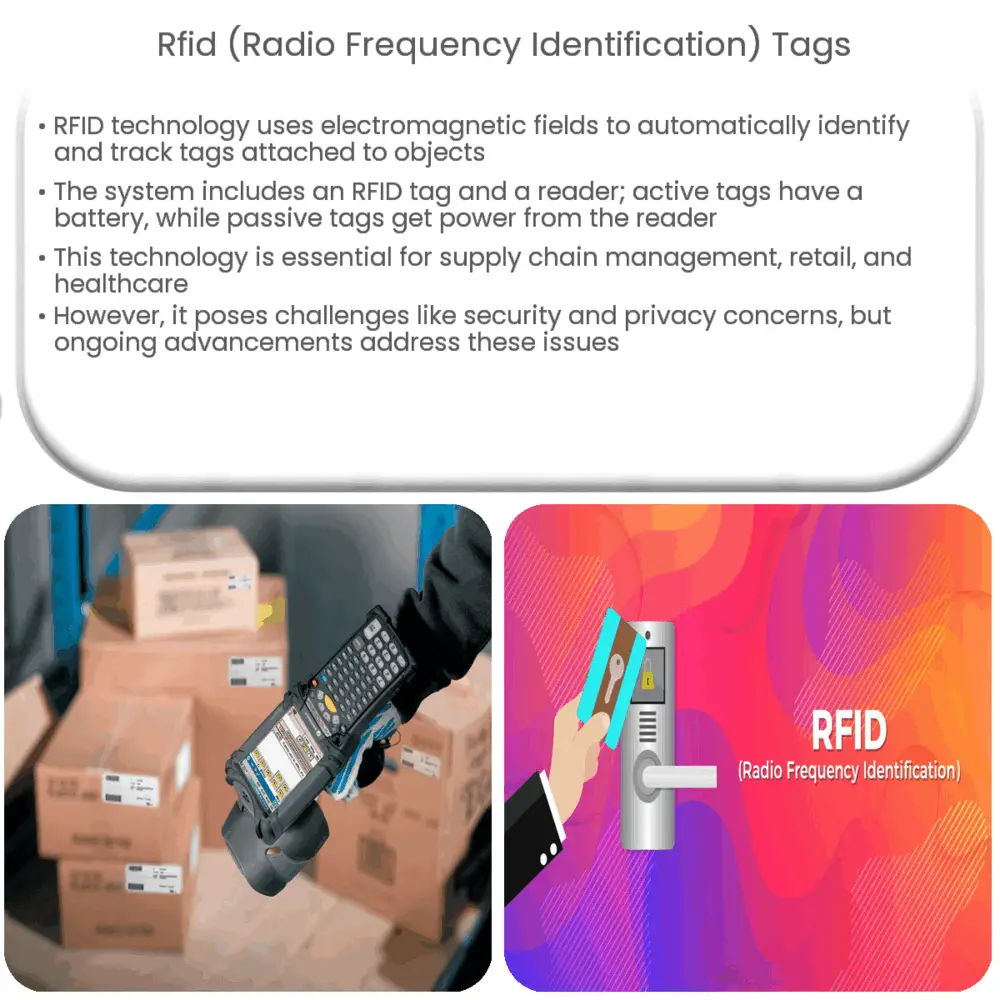Explore the fundamentals of RFID tags, their types, applications, potential risks, and future prospects in IoT and smart cities.

Understanding RFID (Radio Frequency Identification) Tags
RFID, or Radio Frequency Identification, is a technology that uses electromagnetic fields to identify and track tags attached to objects automatically. These tags store electronically-stored information that can be read from up to several meters away, unlike traditional barcode tags which need to be within direct line-of-sight of the reader.
Components of RFID System
The RFID system comprises two main components: the RFID tag and the RFID reader. The tag consists of an integrated circuit and an antenna, which is used to transmit the data. The reader, on the other hand, uses a two-way radio transmitter-receiver to interpret the data encoded in the tag’s integrated circuit.
Types of RFID Tags
- Active RFID tags: These are powered by an internal battery and can be read from distances up to 100 meters. They’re often used in large-scale applications like tracking railway cars on a track.
- Passive RFID tags: They lack a power source. Instead, they receive power from the reader that sends out electromagnetic waves. The tag then uses the energy to send back its information. Though the reading distance is less compared to active tags, they’re smaller, cheaper, and have an unlimited operational lifetime.
Applications of RFID Tags
RFID technology is widely used across various sectors due to its powerful tracking capabilities. Some of the significant applications include:
- Supply Chain Management: RFID tags are integral to improving inventory management and reducing errors in supply chain processes.
- Retail: They play a vital role in preventing theft, managing inventory, and improving customer experience. For instance, stores use RFID to track high-value items.
- Healthcare: From tracking medical equipment to patient identification, RFID tags aid in improving healthcare services.
Although RFID technology offers many benefits, it’s essential to understand its limitations and potential risks, such as security and privacy concerns. In the next section, we will delve into these aspects and also discuss the future of RFID technology.
Limitations and Risks of RFID Tags
While the utility of RFID is undeniable, it’s important to consider the limitations and potential risks associated with its use:
- Security: Since RFID tags can be read from a distance, there is a risk of unauthorized access or eavesdropping. RFID systems must be equipped with robust security protocols to prevent data breaches.
- Privacy: Given that RFID tags can be embedded in objects and documents without one’s knowledge, there are valid privacy concerns. Measures should be taken to ensure transparency and user control over data.
- Interference: RFID systems can be susceptible to electromagnetic interference, which can affect the accuracy of the data read from the tags.
Future of RFID Technology
The future of RFID technology looks promising, with advancements paving the way for more sophisticated applications:
- Internet of Things (IoT): RFID tags are expected to play a significant role in the expansion of the IoT, enabling objects to communicate and interact with each other.
- Smart Cities: From managing waste to controlling traffic and improving energy efficiency, RFID tags will be instrumental in creating smart cities.
- Advanced Healthcare: From tracking patient vitals to managing medication, RFID tags could revolutionize the healthcare industry.
Conclusion
In conclusion, RFID (Radio Frequency Identification) technology, with its ability to automate identification and data collection, offers tremendous potential across various sectors. While it does pose certain challenges and risks, such as security and privacy concerns, ongoing advancements are constantly improving these aspects. As a pivotal component in the development of the Internet of Things and smart cities, the future of RFID is indeed promising, heralding a new era of connectivity and automation.

